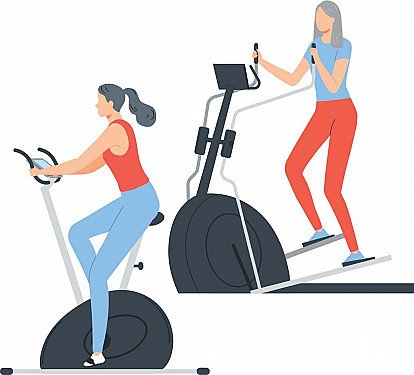3 posture tips to get the most out of a core workout

Good posture is important, even during exercise. Quick posture checks before and during a core exercise routine can help you avoid injury and squeeze the biggest benefit from your workout. Here is what you need to know:
- Stand up straight. When instructions for an exercise ask you to stand up straight, that means keeping your:
- chin parallel to the floor
- shoulders even (roll them up, back, and down to help achieve this)
- arms at your sides, elbows relaxed and even
- abdominal muscles pulled in
- hips even
- knees even and pointing straight ahead
- feet pointing straight ahead
- body weight evenly distributed on both feet.
- Stay in neutral. Neutral alignment means keeping your body in a straight line from head to toe except for the slight natural curves of the spine. Whether you're standing or seated, that means your spine is not flexed or arched to overemphasize the curve of the lower back. One way to find neutral is to tip your pelvis forward as far as is comfortable, then tip it backward as far as is comfortable. Neutral is roughly in the middle. If you're not used to standing or sitting up straight, it may take a while for this to feel natural. A neutral wrist is firm and straight, not bent upward or downward.
- Get the angle. When angles appear in exercise instructions, visualize a 90-degree angle as an L. To visualize a 30-degree angle, mentally slice the 90-degree angle into thirds, or picture the distance between a clock's minute hand and hour hand at one o'clock.
Achieving and maintaining good posture during your workouts takes a little practice. If possible, look in a mirror when exercising. Try to take a few moments each day to practice better posture, too.
For more details on core exercises and advice on ways to strengthen your core, buy Core Exercises, a Special Health Report from Harvard Medical School.
Disclaimer:
As a service to our readers, Harvard Health Publishing provides access to our library of archived content. Please note the date of last review or update on all articles.
No content on this site, regardless of date, should ever be used as a substitute for direct medical advice from your doctor or other qualified clinician.















